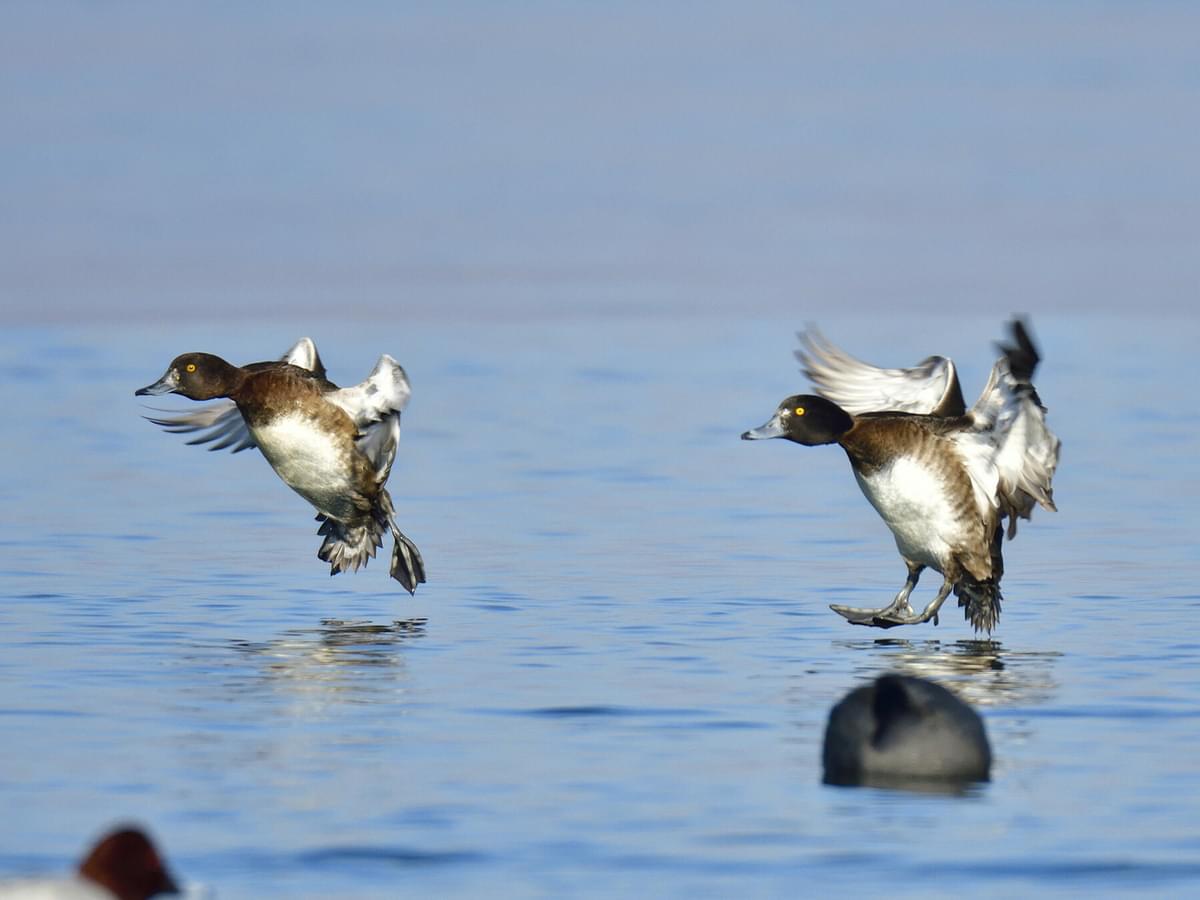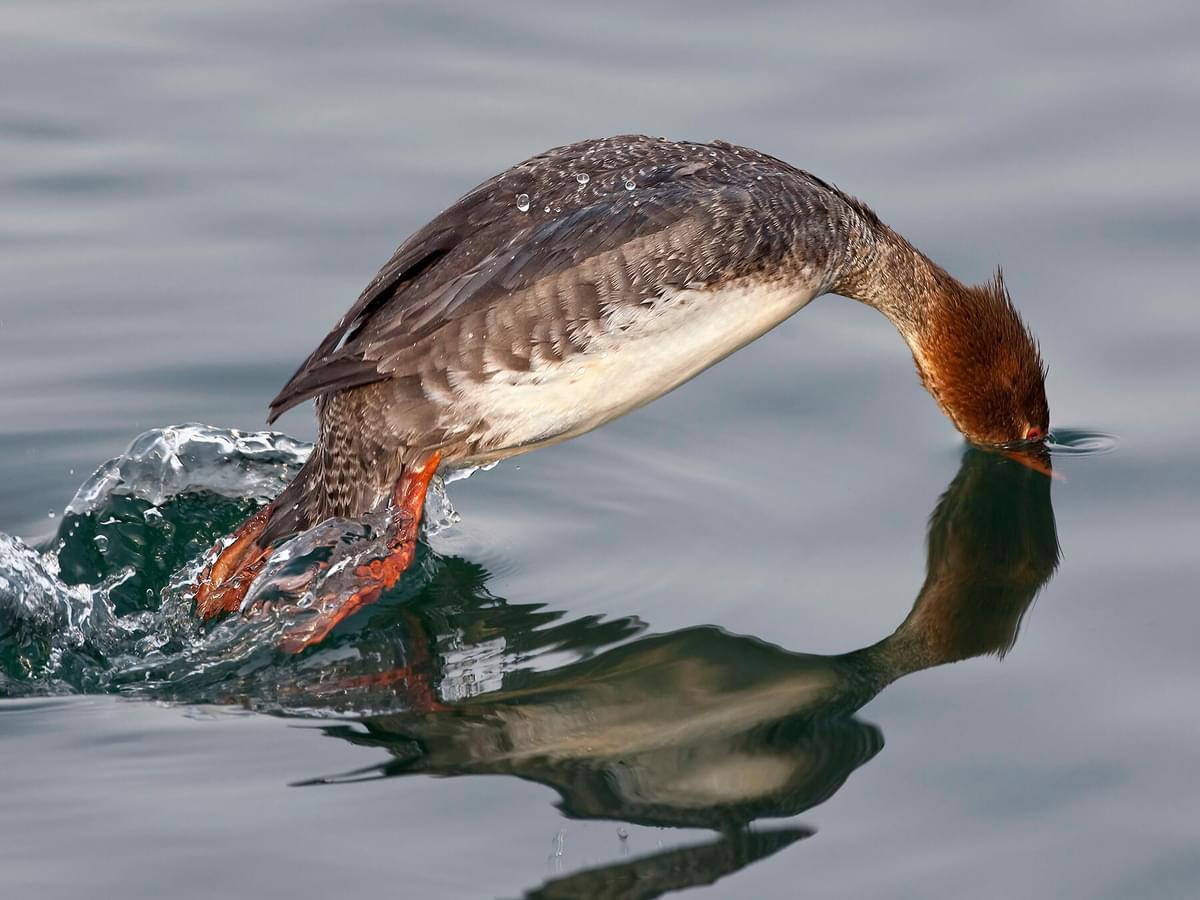Webbed feet are ideal for birds that swim on or under the water’s surface. Water birds’ feet vary between the different species with the main difference being the amount of webbing between the toes.
Commonly known as waterfowl, ducks’ feet are called palmate. This is the most common type of webbed foot. Palmate is when the three front facing toes are joined by webbing, and the small, raised back toe (the hallux) is separate.
The foot is triangular in shape and is found in many aquatic birds including ducks, gulls, terns, swans and geese. The word ‘palmate’ originates from the Latin word ‘palmatus’, meaning ‘shaped like an open palm’.

Mallards webbed feet
How do ducks use their feet?
Ducks’ feet are uniquely designed and play a major role in their day-to-day activities including swimming, flying, walking and maintaining their body temperature.
As a lot of their time is spent in water, their webbed feet make perfect paddles, helping the bird to propel efficiently through the water.
When swimming, the toes are spread apart which helps them push through the water with more force. The toes are then closed and brought forward to get ready for the next stroke similar in principle to a rowing crew feathering their oars at the end of each stroke. The feet also act as a rudder, helping to steer the bird in the right direction.
There are 162 species of duck worldwide, living in both seawater and freshwater. They can be found across every continent with the exception of Antarctica.
Ducks are competent flyers with some species migrating long distances to warmer climates during the autumn/winter months.
Ducks can take off from water and, when landing, flap their wings and spread their feet so that the webbing creates the maximum surface area. This helps them to slow down and be guided to a safe landing.

Male and female Tufted Ducks
Dabbling ducks, similar to the mallard or garganey, have legs that are centrally placed. This enables them to walk on land with ease. When searching for food, the dabbling duck, also known as a puddle duck, suspends its body in the water in a vertical position with its head underwater and tail in the air while stretching the head downwards to feed. The feet and legs enable them to tread water while doing this.
Diving ducks like the common pochard or the long-tailed duck have legs that are placed far back, which is good for swimming and diving but makes it difficult for them when walking.
Many species can dive to great depths, making a vertical dive from the water’s surface to the bottom of the river, lake or sea bed in search of food. To achieve this, they propel their body underwater while moving both feet simultaneously with their wings folded and close to the body.
Ducks have a ‘counter-current heat exchange system’ located at the top of their legs, which helps them maintain their body temperature.
During cold weather, it keeps their legs and feet warm and enables them to spend time on the ice or in cold water. The talons, colour and size of a duck’s foot can help identify the species.

Female Red-Breasted Merganser diving
